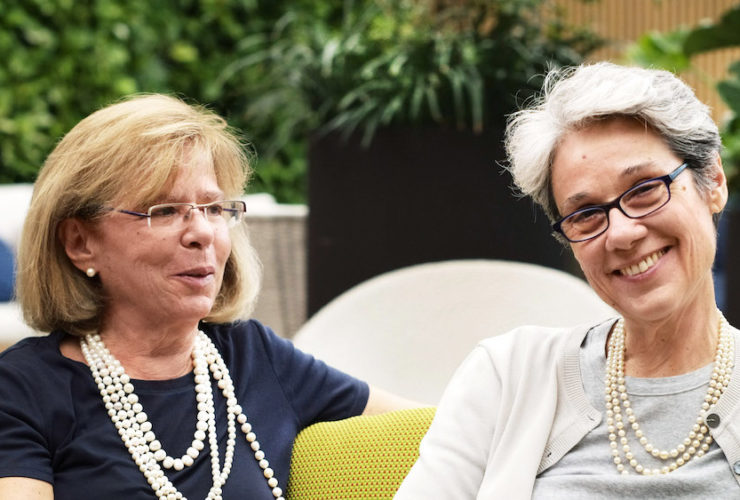“Communicating emotions, that’s what our work’s all about. Buying a yacht is entirely a question of emotion. That’s why I’m not at all digitalised. You have to be human”. (Here all our posts on Frauscher).
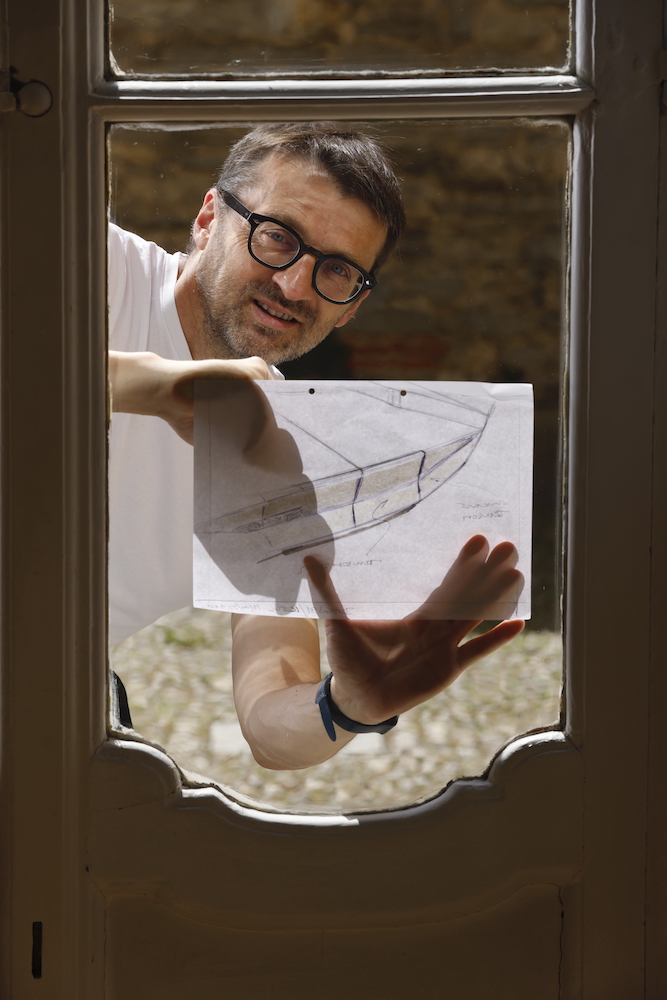
A study in Como
The sun coming through the studio windows in the courtyard of a period building in Como’s Walled City highlights the ceiling stuccoes. “If they were made by machine they’d all be perfectly identical. Cold. But they’re made by hand, with small defects, so they have soul, they’re warm”. For Harry Miesbauer, Austrian by birth, (“But quite Italianised”, he insists) naval design arrived after nine years of mechanical engineering at the helm of a company in Salzburg. “We made electronic card equipment and systems”. Then, one day, he was browsing a sail yachting magazine, his eye fell on an ad by the University of Southampton promoting yacht design courses.
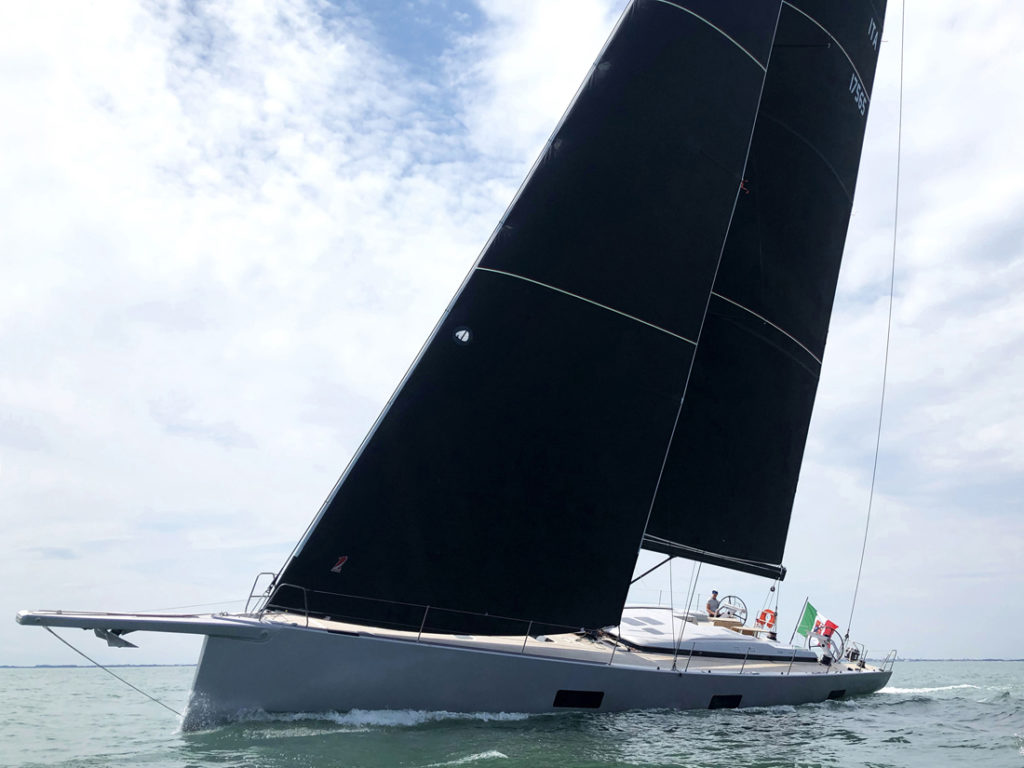
Harry Miesbauer: desire for change
“The only person above me in the company hierarchy was the owner. There was no way for my career to progress. I could coast along until retirement!” Instead, driven by the passion for sail he had nurtured since his childhood, fuelled by a long series of races, in many classes and international events. “I resigned and went to Southampton. In the middle of the course I applied to do an intåernship during the summer break. Luca Brenta was one of the most important studios. I phoned them and Lorenzo Argento said, “Come along”.
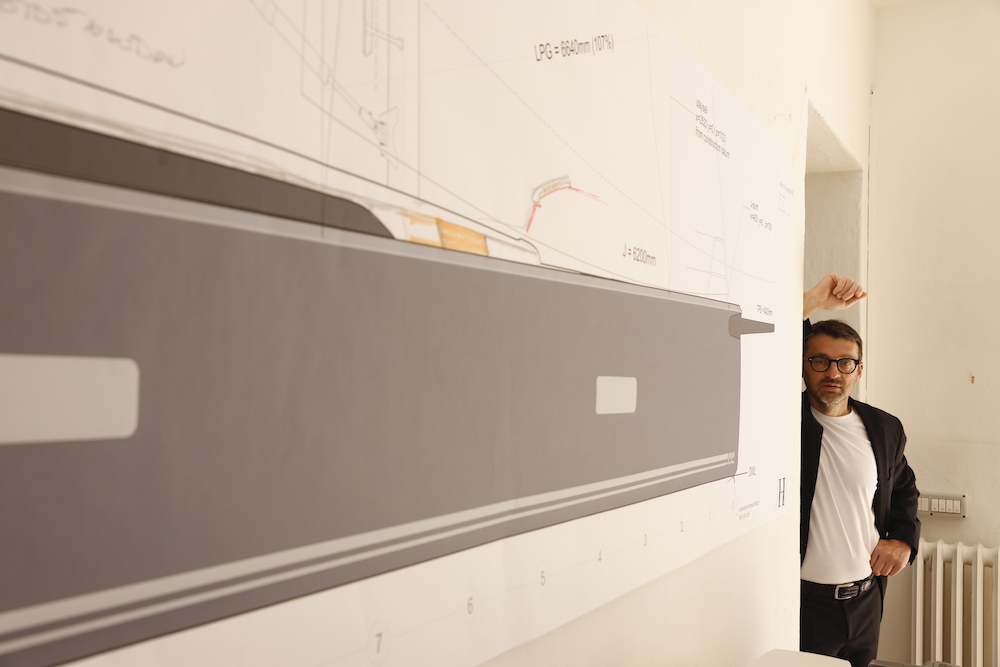
Early days in yacht design
After the internship I said to myself that as soon as I’ve graduated I’m coming back here. I joined them in 1998. “I immediately felt at ease with Luca and Lorenzo, partly because of my engineering experience. Kenora, the 32-metre Wally launched in 1999, was the first yacht I worked on”. After Brenta Miesbauer moved to the Germán Frers studio as senior designer and coordinating between the design team and the yard. “I worked on Amer Sport One, one of the two yachts by Nautor Challenge at the Volvo Ocean Race 2001/2002 and the Swedish challenge at the Auckland event in 2003, the one Alinghi won. The design solution was to put as much weight as possible into the bulb and ensure the boat was as straight as possible to win the beat and lead the turn around the first buoy. Then you defend your position in the downwind run”.
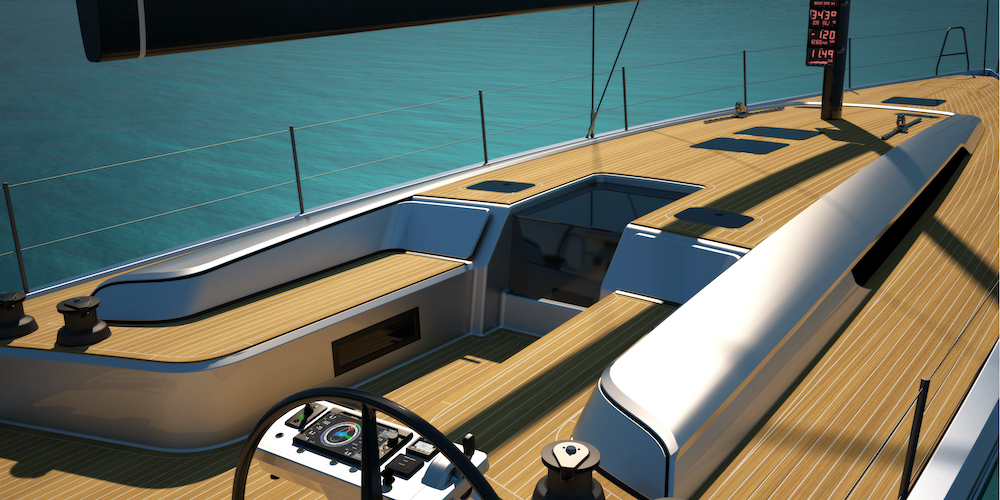
Harry Miesbauer and the America’s Cup
It’s very different today, isn’t it?
When I saw the tonnage rule for the AC75 with a single hull with no keel that sailed only on its foils, I said they were crazy. Then when I saw it flying across the water, I thought “Well done”. But I don’t like the race format very much. Then I don’t think that all the research carried out will have an influence on normal yachts, the type of craft you use with friends and family. It used to be different. And now I think the role of the designer is carried out by the programmers of the software used to manage the foils and all the rest.
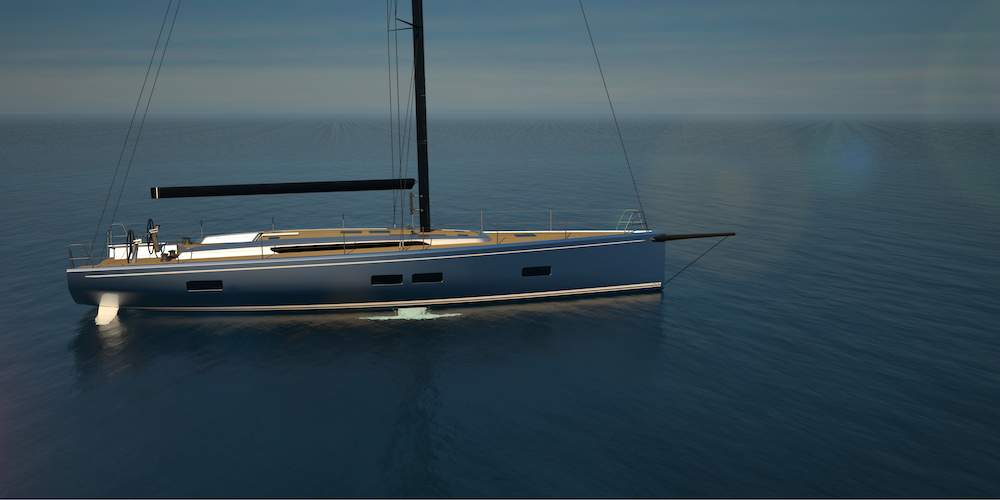
The opening of his studio
Let’s go back to the story. After Frers came your return as partner to the Brenta studio. Finally, in 2007, /H/arry Miesbauer Yacht Design was established, with head office in Como, Italy. What lay behind this choice?
Italy, because here a solution is always found to every solution. Nobody says, “You can’t do that”. That’s what drives Italian design. Como, because it’s a beautiful city near Milan, the design capital, and three airports. Not forgetting the lake!
First in other studios then in person, you’ve been involved in many projects since 1990. What’s changed in the design?
The material to present to the client. Years ago it was enough to show the classic tables with sail plan, deck plan and interiors layout. Now you need exterior renderings, 3D images. A huge amount of material. The designer used to everything…
But not now?
We do it all, including the structure. Nowadays, especially if it’s a commission from a yard, there’s someone who does the exterior styling, someone else the interiors and someone else the structure. To me, the direction of the design gets lost in all this. And with so many people from so many areas involved, if you change just one comma it can cause a whole series of problems. If you handle everything directly you get to the final product more quickly.
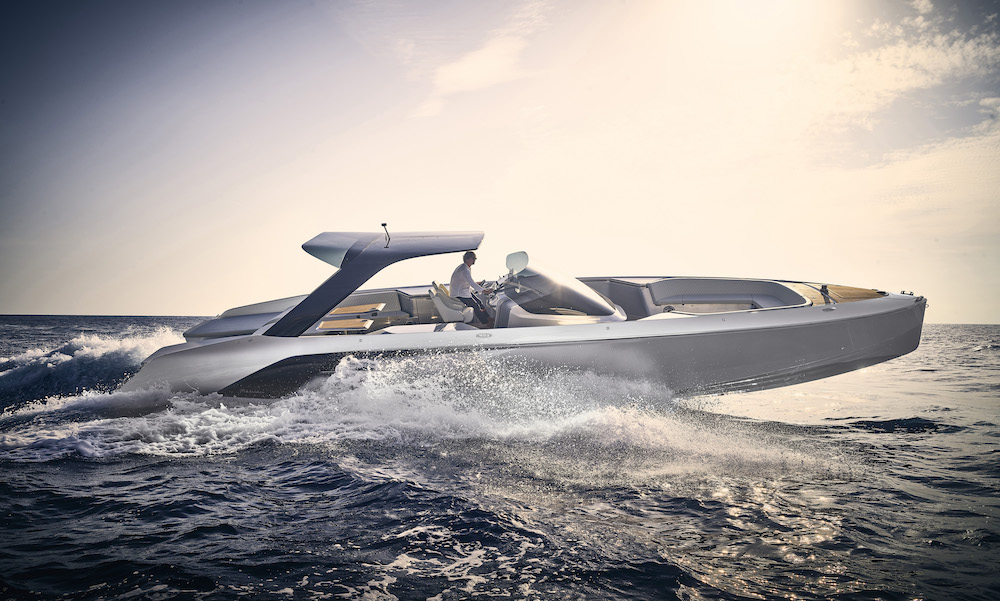
Harry Miesbauer and Frauscher
And after a long series of sail yachts, you designed a motoryacht.
In 2012 I got a call from Michel Frauscher. Our fathers used to sail together. He asked me to design for him. I was little apprehensive about switching from a sail yacht to a motor yacht hull. The end result was the Frauscher 848 Fantom, a great success. Since then I’ve designed the whole fleet. We’ve won many nominations and in 2019 we won at the Best of Boats Award with the Frauscher 1414 Demon Air.
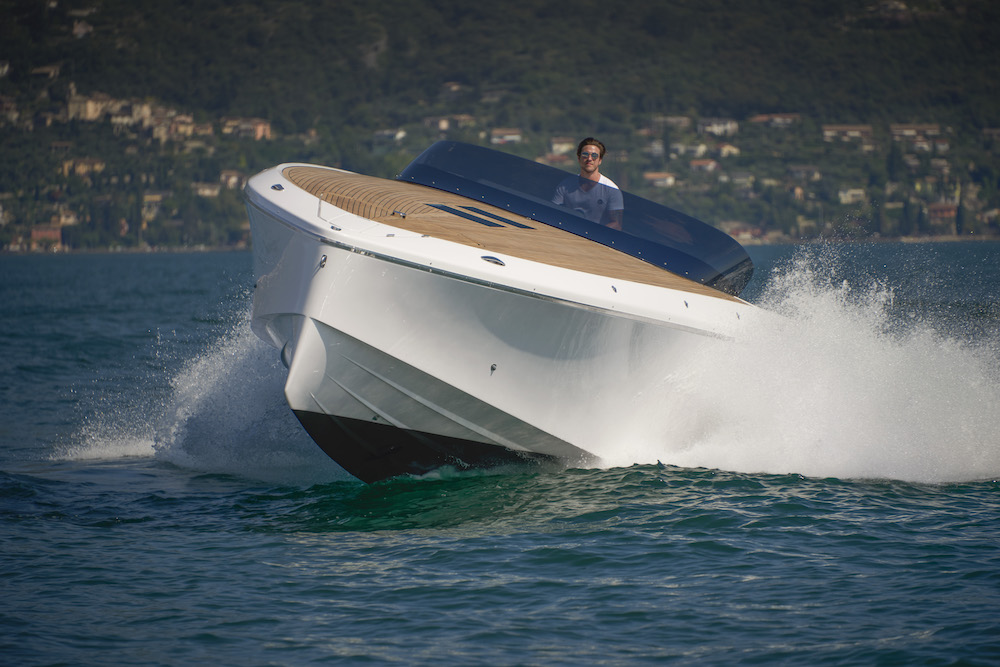
No shortage of awards for your sail yachts, too!
Yes, the latest is the Gold A’Design Award won by Scuderia 65 built in Fano by Adria Sail. The Hagar V was a design for an owner who’s passionate about racing. It turned out to be the fastest of the VPPs. You feel like you’re on a dinghy, but one that’s 20 metres in length. I’ve seen it do 21 knots, but they’ve even managed 28.7 knots.
Have you ever worked in the large motor yacht sector?
No. I can’t see myself putting incredibly heavy slabs of marble on board a yacht. It just doesn’t fit with the way I see yachts. My pencil would break!
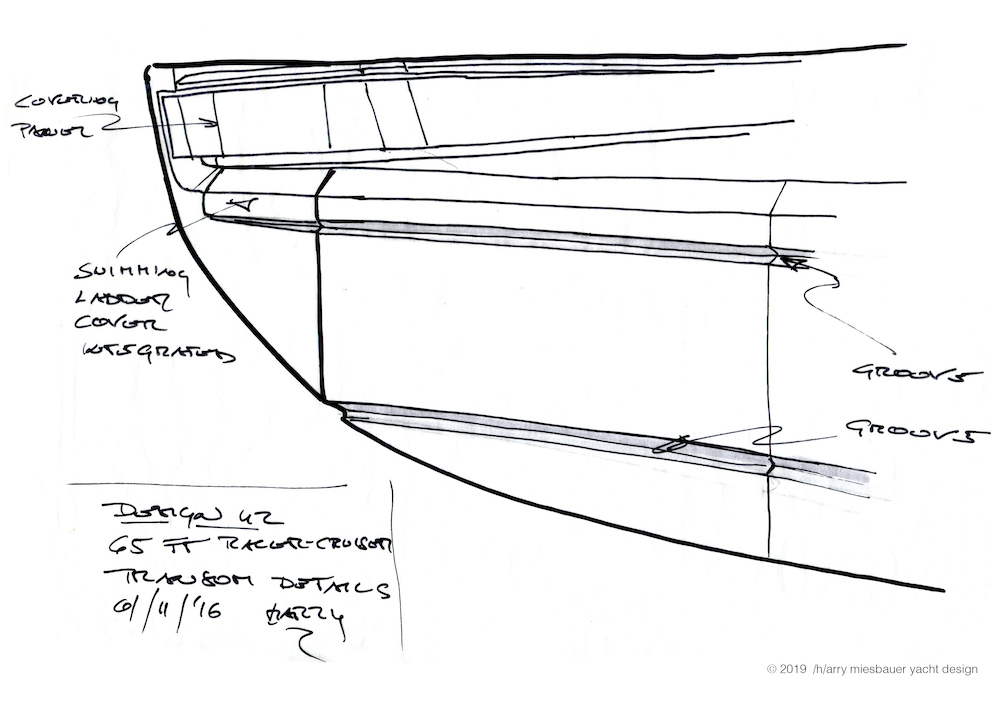
hand drawing
Did you say “pencil”?
Yes, I’ve gone back to hand drawing. Not the hulls, but the aesthetic part. You express the design better like that. You find the solution more quickly. You can’t do it on a computer, and a rendering is always soulless. The pencil channels emotions. I always carry a pencil in my pocket.
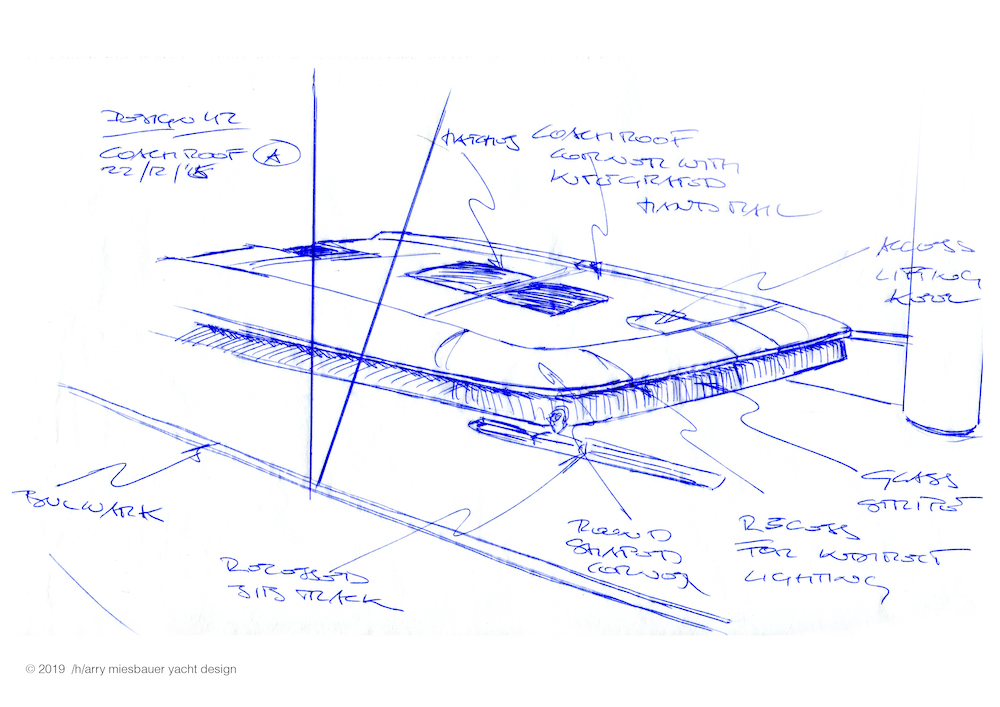
Last question. What does Harry Miesbauer choose between form and function?
I used to like the ten principles of good design listed by Dieter Rams: aesthetics, utility, durability, details and everything else. But in the end it was just design, very rigid, very German. And for me there is not only black and white. We also need emotion in our work. Life is also colour.
Emilio Martinelli






